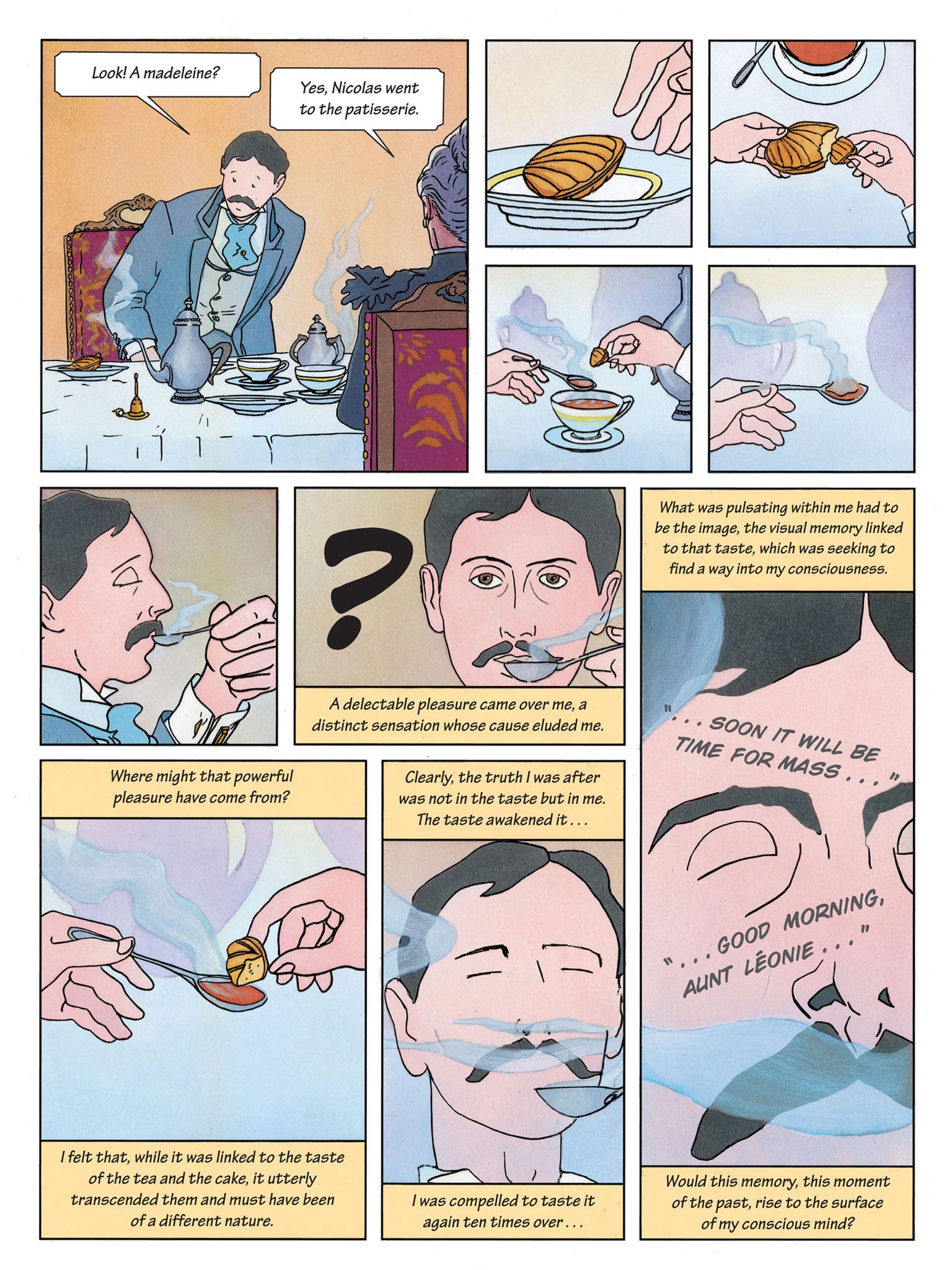In Search of Lost Time: Swann's Way: A Graphic Novel by Stéphane Heuet; Trans. by Arthur Goldhammer, book review
This graphic adaptation of Swann's Way captures the distinct feel of the author

Your support helps us to tell the story
From reproductive rights to climate change to Big Tech, The Independent is on the ground when the story is developing. Whether it's investigating the financials of Elon Musk's pro-Trump PAC or producing our latest documentary, 'The A Word', which shines a light on the American women fighting for reproductive rights, we know how important it is to parse out the facts from the messaging.
At such a critical moment in US history, we need reporters on the ground. Your donation allows us to keep sending journalists to speak to both sides of the story.
The Independent is trusted by Americans across the entire political spectrum. And unlike many other quality news outlets, we choose not to lock Americans out of our reporting and analysis with paywalls. We believe quality journalism should be available to everyone, paid for by those who can afford it.
Your support makes all the difference.In the past decade or so, Jane Austen's Pride and Prejudice, Fyodor Dostoevsky's Crime and Punishment, Henry David Thoreau's Walden and several other literary classics, have been adapted into graphic novels. In most cases, the adapters try to extract the essence of the texts and make them accessible for new readers.
Stéphane Heuet's graphic adaptation of Swann's Way, the first volume of Marcel Proust's great Modernist novel In Search of Lost Time, is translated from the French by Arthur Goldhammer, who says in his introduction that he and Heuet have "tried to preserve the 'flavour' of Proust." He compares their book to a "un menu de dégustation, or tasting menu, (which) tries to give a full sampling of the dishes in the repertoire of a great chef." Heuet's love of Proust shines through in his inventive drawings. On the opening page, he presents one of his most successful motifs: eyes floating in the bedroom where the narrator awakes "in the middle of the night, not knowing where I was."
In the next frame, they float in a sea of memories, surrounded by landmarks from the narrator's past. This begins Part One, which includes the famous scene where a bite of tea-soaked madeleine elicits a flood of memories from childhood summers in Combray.
When the eyes reappear, they strike me as representations of both narrator and reader. Lost Time is the novel of which it can truly be said that all life is here, and Heuet's eyes are a brilliant metaphor for the way readers find themselves in it.
Heuet describes the narrator's attachment to his mother, his curiosity about their family friend Charles Swann and his mysterious wife Odette, and the narrator's formative experiences of love and literature. Heuet is alive to Proust's comedy, depicting the "heavenly shades" of the asparagus which, the narrator says, "(transform) my chamber pot into a bottle of perfume."
In Part Two, the novel loops back to tell the story of Swann's painful affair with Odette. Heuet captures the parochial scene at Madame Verdurin's salon, where the couple meet, and nails Dr Cottard's "conditional provisional smile", for my money one of the most hilarious pieces of characterisation in literature.
When Swann is captivated by a piano sonata, Heuet draws the notes swirling in the air. This image is echoed in Part Three when drawings of windswept leaves signal the passing of time and cultural change.
Heuet has fun with reveries about the places where "the 1:22 train" from Paris stops en route to the coast. For example, when the narrator says that the name "Pont Aven" makes him imagine "a flimsy cap wafted away on wings of white and pink", Heuet draws exactly that.
But his illustrations of characters don't impose themselves on your imagination the way an actor might in a film. This is true to the spirit of the novel, which creates space for readers' thoughts and reflections.
Reading Heuet is like chatting with somebody who shares your passion for Proust: you laugh, wince, and perhaps disagreetogether.
While Heuet's Swann's Way sends the initiated back to the source, will it serve newcomers as the "gentle introduction" envisaged by Goldhammer? Possibly, but the only real way to discover Proust is to get lost in his long sentences, and find your way to their meanings. It is heady, intimidating, revelatory, and needs no introduction. You can't have Proust without the boring bits. Boredom is necessary.
Gallic Books, £19.99. Order at £16.99 inc. p&p from the Independent Bookshop
Join our commenting forum
Join thought-provoking conversations, follow other Independent readers and see their replies
Comments